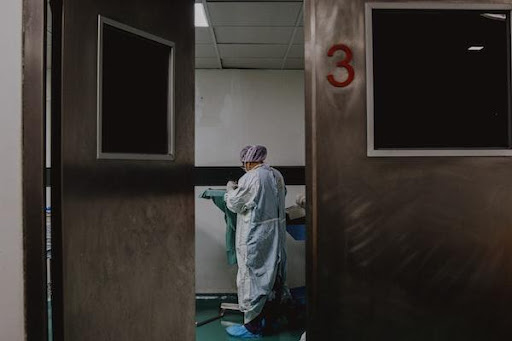Respiratory therapy is a branch of medicine specializing in diagnosing and treating disorders affecting the respiratory system. This can include diseases of the lungs, airways, and chest wall, as well as problems with breathing. This is a great career path for anyone who pursues a BSRT degree.
Chest Physiotherapy
Chest physiotherapy is a type of respiratory therapy that helps clear the lungs and airways to improve breathing. It can be used to treat a variety of respiratory conditions, including asthma, bronchitis, and emphysema. Chest physiotherapy typically involves using various techniques to loosen mucus and secretions in the airways, including chest percussion (or “thumping”), vibration, and coughing. These techniques can be performed manually or with the help of devices such as a chest percussion vest or an air compressor. Chest physiotherapy may help to improve the overall function of the lungs and airways.
Oxygen therapy
Respiratory therapy oxygen therapy can be a lifesaving treatment for people with respiratory problems. Oxygen therapy may be prescribed for people with chronic obstructive pulmonary disease (COPD), emphysema, bronchitis, and other respiratory diseases. Oxygen therapy involves the use of supplemental oxygen to help improve a person’s breathing. This therapy may be used in the hospital or at home. There are several types of oxygen therapy, including continuous positive airway pressure (CPAP) therapy. This therapy uses a machine to deliver pressurized air through a mask that covers the nose and mouth. The air helps keep the airways open and prevents them from collapsing. CPAP therapy is often used to treat sleep apnea.
Nasal cannula therapy involves the use of a thin tube that is inserted into the nose, and the tube delivers oxygen directly to the lungs.-Nebulizer therapy uses a machine to convert liquid oxygen into a mist that is breathed in through the mouth or nose.-Ventilator therapy: This therapy uses a machine to help a person breathe. A ventilator can be used to provide supplemental oxygen to a person who is unable to breathe on their own
Mechanical Ventilation
In respiratory therapy, mechanical ventilation uses a mechanical device to assist or replace the work of the respiratory muscles. Mechanical ventilation can be used for either acute or chronic respiratory failure. In acute respiratory failure, the goal is to support the patient until they can breathe on their own. There are several types of mechanical ventilation devices. The most common type is the mechanical ventilator. Other types include the continuous positive airway pressure (CPAP) device and the bilevel positive airway pressure (BiPAP) device.
The CPAP device is a small, portable machine that is used to help a patient breathe. It is used to treat patients with sleep apnea. The CPAP device delivers a continuous flow of air to the patient’s airway, which helps keep the airway open. The BiPAP device is a small, portable machine that is used to help a patient breathe. It is used to treat patients with chronic respiratory failure. The BiPAP device delivers two different air pressure levels, depending on the patient’s needs.
Administering Medication
Respiratory therapy administering medication is a very important part of providing respiratory therapy to patients. A variety of respiratory medications can be administered to patients, and each one has a specific purpose. Some of the most common respiratory medications include bronchodilators, antibiotics, and steroids.
Bronchodilators are medications that are used to open up the airways and make it easier for patients to breathe. Bronchodilators can be delivered through an inhaler or a nebulizer, and they are often used to treat asthma and other respiratory conditions. Antibiotics are medications that are used to treat infections. Antibiotics can be delivered through an inhaler, a nebulizer, or an IV, and they are often used to treat pneumonia and other respiratory infections. Steroids are medications that are used to reduce inflammation. Steroids can be delivered through inhalers, nebulizers, or IVs, and they are often used to treat asthma and other respiratory conditions.
The respiratory therapist is a vital part of the health care team and plays a key role in treating respiratory disorders. The career can be challenging, but it is also highly rewarding. Talk to a career counselor if you’re interested in pursuing a career as a respiratory therapist.




